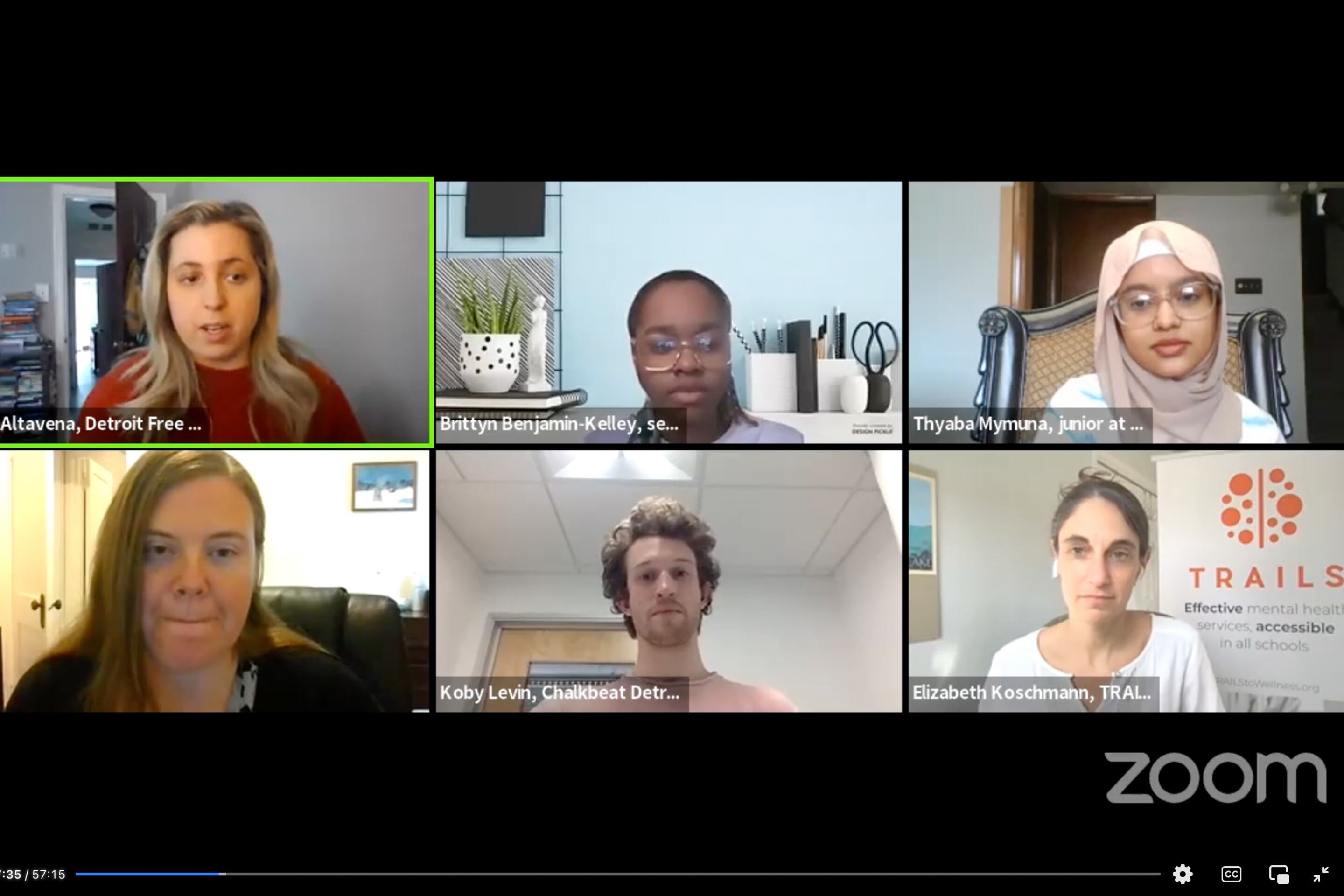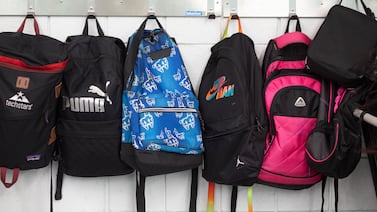Brittyn Benjamin-Kelley and Thyaba Mymuna have little faith in the system now in place to support student mental health in Michigan schools — a gap, they say, that must be filled.
What’s needed to address student mental health are more therapists and psychologists, they said during a panel discussion Wednesday co-hosted by Chalkbeat Detroit, Bridge Michigan, and the Detroit Free Press. Watch the full conversation here.
Brittyn, a senior at Cass Technical High School in Detroit, said her school, which enrolls 2,400 students, has only a handful of counselors. “That’s stressful for everyone,” she said. “I feel like we need more people for that in our school and other schools.”
Poor mental health among teens has been a growing issue, according to a report from the Centers for Disease Control and Prevention. More than one in three high school students had experienced persistent feelings of hopelessness in 2019, a 40% increase since 2009.
Leading pediatric associations such as the American Academy of Pediatrics and Children’s Hospital Association last year declared a national emergency in children’s mental health, citing the pandemic’s ongoing toll.
Districts across the state have $6 billion of COVID relief funding to spend, which some schools are using to address the youth mental health crisis. That level of investment can range from hiring social workers and counselors, creating curriculums focused on student well-being, and purchasing therapy dogs.
Thyaba, a junior at Cousino Senior High School in Warren, said prioritizing the mental health needs of students should be on par with the emphasis placed on physical health and fitness in schools.
“We already have nurses and doctors, at least at our school, to help students physically because they really give importance to athletes. But if you’re giving importance to athletes and students, they should also give importance to their mental health,” Thyaba said.
The discussion follows a January poll that showed Michigan residents overwhelmingly support increased mental health resources.
The event was the first in a four-part Chalkbeat series entitled “COVID and Mental Health,” which seeks to amplify efforts to better support the wellness of students and school staff during this challenging comeback year.
Elizabeth Koschmann, executive director of a University of Michigan program created to make mental health services accessible to students, said the solution to supporting student mental health during the pandemic may not require hiring more professionals. Instead, equipping current school employees with the needed “tools, resources, and professional development” may be what will help address their students’ mental health.
“We have already seen that even with incredible funding opportunities, a lot of positions in schools go unfilled because the positions are incredibly demanding, they’re hard, they’re often under-salaried, they’re emotionally taxing,” she said.
“We have got to reframe our understanding of who these individuals are working in our buildings, and ensure that we’re not setting them up for failure and burnout and exhaustion.”
Increasing student input and feedback in school decision-making, Brittyn said, should be a main priority. Usually, she added, students go to their peers for advice about how to cope with stress, or direct each other to outside resources or professionals they can go to for support.
“I feel like the students and the youth, they raise awareness, they try to come up with their own programs, their own resources,” Brittyn said. “We’re working together because we feel like there’s no one else who can do something for us.”
Amanda Holiday, a Detroit parent and early childhood program director at Congress of Communities, suggested school districts send students home with a list of resources for mental health services available in or outside of school.
The organization found in a recent survey of primarily Latino families in southwest Detroit that many overwhelmingly wanted to talk about mental health support for their children. The priority among parents, Holiday said, was for schools to “meet [student] needs before they become emergency level.”
Thyaba said she believes that acknowledging and listening to students should be the goal of school leaders as they consider how to spend their COVID relief money.
“I don’t think it’s too much to expect people in power to support us, especially when it comes to mental health,” she said. “There’s so many people struggling with mental health and I see every day on the news and all over social media people killing themselves, and it all just hurts me so much because I’m just like, they could have been helped, but they weren’t.”
The next event in the Chalkbeat series on COVID and mental health will be hosted by Chalkbeat Tennessee and the Education Trust in Tennessee on March 31. For more information and to register for the event, click here.
Ethan Bakuli is a reporter for Chalkbeat Detroit covering Detroit Public Schools Community District. Contact Ethan at ebakuli@chalkbeat.org.








